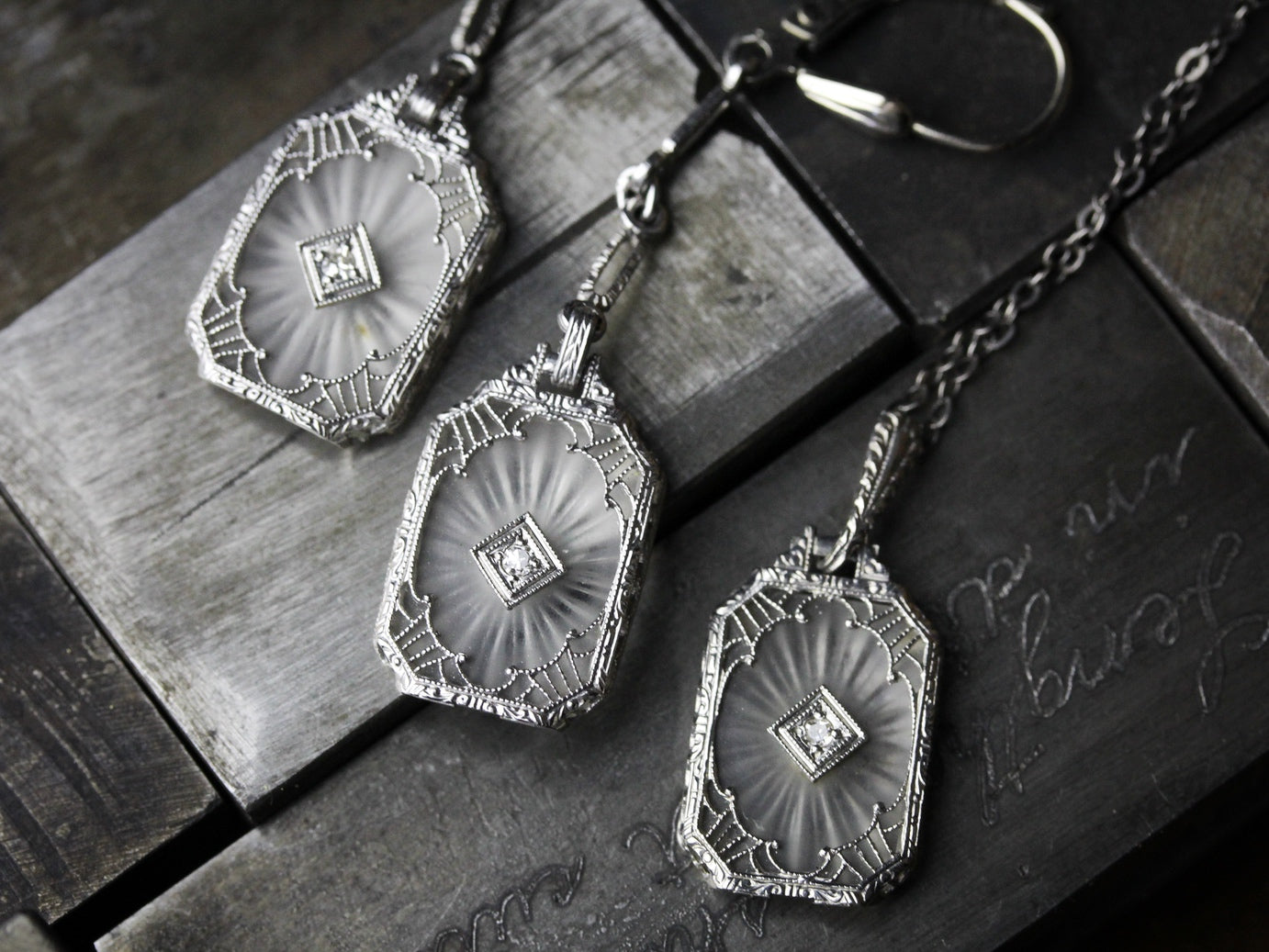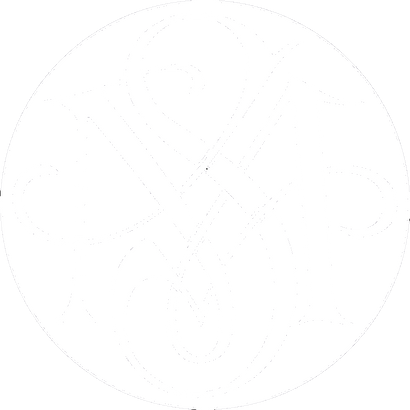GET 10% OFF! USE CODE YEAREND25 AT CHECKOUT
GET 10% OFF! USE CODE YEAREND25 AT CHECKOUT
Add description, images, menus and links to your mega menu
A column with no settings can be used as a spacer
Link to your collections, sales and even external links
Add up to five columns
Add description, images, menus and links to your mega menu
A column with no settings can be used as a spacer
Link to your collections, sales and even external links
Add up to five columns
The Big Guide to Art Deco Jewelry
September 30, 2020 7 min read

The Art Deco aesthetic, one of the most iconic design movements of the 20th Century, spanned industries, from art to fashion to architecture. After a century, the Art Deco movement is still recognized for its importance and the radical design shift it created. In this article, we cover some of the key elements that influenced this revolutionary style and the new jewelry designs that emerged from it.
Cultural Shifts and The Birth of Art Deco
The early part of the 20th Century saw a convergence of important political and cultural events that influenced the world of art and design greatly. World War I, global cultural exchange, and industrial modernization all contributed to the birth of the Art Deco era.
Out With the Old
At the turn of the century, the overlapping styles of Art Nouveau and Victorian were coming to an end. The Art Nouveau ethos of beauty over practicality ultimately proved inaccessible and died away in the early 20th Century. The excessive ornamentation of the Victorian period was quickly seen as dated and old fashioned, and clean lines and thoughtful design became de rigueur.

Left to right: "Cubist Composition" by Georges Valmier (1920); a program from the Ballets Russes (1914)
The Fine Arts
Art movements like Bauhaus and Cubism had a huge influence on design, including an embrace of geometry, simplicity, and clean silhouettes. Another important influence on the new design movement was Sergei Diaghilev’s Ballets Russes, or Russian Ballet, first premiering in Paris in 1909. Bold uses of color, exotic costumes, and feathered headpieces excited the public. Later, after the austerity of wartime, this exuberance would become desirable once more.
World War I
In both the couturiers and the streets, women’s fashion had been completely overhauled. The exodus of men fighting in World War I between 1914 to 1918 necessitated women entering the workforce and donning more practical clothing. Complicated dresses and corsetry was discarded in favor of simple shifts and boyish silhouettes. Also during this time, platinum use in jewelry plummeted, as this metal was deemed essential for the war effort. In 1917, New York jeweler David Belais introduced his formula for 18k white gold. White gold proved a popular alternative to platinum in the Art Deco era.
After the war, women had little interest in returning to their restraints and wanted to wear clothing that complimented an active lifestyle and leisurely pursuits. Lightweight fabrics became popular, and these new styles suited the free spirited disposition of the darling of the 1920’s, the flapper. Naturally, new styles of jewelry were needed to compliment this new fashion.
Travel and Discovery
The discovery of King Tutankhamen’s tomb in 1922 also greatly influenced Art Deco design. As images from the excavation made their way to the western world, Egyptian motifs such as scarabs, pyramids, hieroglyphics, and obelisks became widely popular. Gemstones such as turquoise, lapis, and coral were prevalent, as well as jewelry styles such as bib necklaces and stacked bangle bracelets. The increasing globalization of the modern era, combined with the lingering influence of Victorian imperialism, led to designs influenced by East Asian, Indian, and African motifs.
Related Article: From Pharaoh to Fashion: A History of Egyptian Revival Jewelry
Art Deco Defined
1925 Paris Design Exposition
While current events certainly informed the new aesthetic, the real catalyst for the Art Deco style was L’Exposition Internationale des Arts Decoratifs et Industriels Modernes in 1925, a design exposition in Paris originally planned for 1916, but postponed due to the war. Only new and inspired works were accepted, and exhibitors agreed to design with the new aesthetic in mind. One important aspect to this change in design was the unprejudiced use of materials for their beauty or aesthetic appeal, rather than their monetary value. Previously unfashionable gemstones such as aquamarine, topaz, mother of pearl, coral, jade, and onyx became essential to jewelry designers who played off their different opacities and contrasting properties.
A Spectrum of Color
Color was back. In addition to the use of colored gemstones, designers were playing with new advances in celluloid and bakelite jewelry which afforded a whole spectrum of hues. Fashionable contrasts were achieved through combinations of black onyx with diamonds, ivory and ebony, and onyx and mother of pearl. Materials such as jade and bone were carved into Asian-influenced designs. Enamel was also used prominently to achieve colorful works.
Related Article: Plastic Fantastic: Bakelite, Celluloid, & Vintage Plastic Jewelry
Related Article: The History of Enamel Jewelry

These Art Deco earrings and pendant showcase the gem-like qualities of camphor glass and the delicate intricacy of die-struck filigree.
Industrial Advancements
Advances in diamond cutting led to baguette and table cuts, while the malleability and strength of platinum allowed for invisible settings and fluid designs. These pavé settings were imitated in costume jewelry with rhinestones and glass. Further advances in lab-grown gemstones led to their widespread use in jewelry. Synthetic sapphires in particular are very common in Art Deco jewelry, primarily as accent stones. Another manmade material popular at this time was camphor glass, a kind of glass treated with acid to achieve a frosted finish, which was set into filigree jewelry and often accented with a diamond.
Related Article: The History and Early Origins of Camphor Glass

Hexagonal heads and filigree basket settings, like the ones in this engagement ring, were popular in the Art Deco era.
Die-struck filigree with hand finished accents took the form of hinged bangle bracelets, lavalier necklaces, rings, and brooches. Chromium plating allowed for tarnish resistant alternatives to the more expensive platinum and white gold. Filigree work was used to beautiful effect, especially in rings, and allowed for larger styles without using a lot of metal. Other popular ring styles at the time include octagonal and hexagonal settings, cocktail rings, dinner rings, stepped shoulders, and basket settings.
Related Article: Struck By Light: Art Deco Filigree Jewelry History & Method
Related Article: The History of Dinner Rings

Pearls exploded in popularity during the Art Deco era, and were often layered in long beaded lengths.
Pearls, Pearls, Pearls
Pearl necklaces were extremely popular, especially among the flappers. Long strands of up to 60 inches were piled on, swinging to and fro as women danced the new energetic dances that jazz music demanded. Imitation pearls were the most in demand, even among the wealthier classes. Jewelers offered a range of qualities in imitation pearls, some fetching a very high price, and often preferred to genuine pearls because of their “indestructible” properties. The prominence of beaded jewelry extended to other materials as well, including amber and glass. Beaded tassels, faceted beads, and graduated designs were common.
Related Article: Which Pearl is Which: A Helpful Guide
More Ways to Wear Jewelry
New ways of ornamenting one’s self were introduced in the Art Deco era. Dress clips to hold folds of fabric, two part belt buckles, hat ornaments, and bracelet watches (essentially decorative wrist watches) were all popular. Barrettes and head bands or “bandeaux” were necessary to compliment the new short hairstyles of the time. Some of these bandeaux would break apart and transform into earrings, bracelets, and necklaces.

Actresses Alla Nazimova in "Salome" and Theda Bara in "Cleopatra" showing off the jewelry trends of the time.
Art Deco in Hollywood
Just as the Ballets Russes set trends in fashion, the advent of Hollywood and movie stars would prove just as influential to the jewelry world. Actress Theda Bara helped to renew interest in Egyptian motifs in Cleopatra, five years before the discovery of King Tut’s tomb. Gloria Swanson, in films such as Male and Female, wore pearl encrusted costumes in slinky styles that no doubt helped the gemstone’s popularity. Mary Pickford, actress and America’s sweetheart, was known for her signature pearl and diamond sautoir, a kind of long necklace ending in a tassel pendant. Though not everyone could afford Hollywood worthy jewels, these styles were imitated in more affordable materials and manufactured for the general public.
Related Article: Dripping in Jewels: Hollywood’s Influence on Jewelry Design
Related Article: The History & Beauty of the Lavalier

This sapphire glass lavalier necklace embodies key elements of Art Deco jewelry, including filigree and bold colors.
Art Deco Jewelry: Key Items and Themes
- Gemstones: diamond, aquamarine, topaz, pearl, coral, jade, lapis, onyx, synthetic sapphire and ruby
- Gemstone Cuts: carved, cabochon, fancy and brilliant cut diamonds
- Materials: white gold, chromium plated metal, Bakelite, camphor glass, bone
- Rings: dinner rings, cocktail rings, filigree settings, octagonal/hexagonal settings, basket settings, stepped shoulders
- Necklaces: long pearl strands, lavalier, sautoir, festoon, beads
- Bracelets: filigree link, bangles, arm bands, stacked styles, decorative watches
- Accessories: bandeaux, dress clips, hat ornaments, buckles
- Design Themes: geometry, symmetry, East Asian, African, South American, architectural
Art Deco Today
The stock market crash of 1929 that ushered in the Great Depression did not lead to a period of austerity in jewelry design. On the contrary, Hollywood entered its Golden Age and actresses adorned themselves in extravagant jewels befitting their stature. Meanwhile, the general public embraced cheaper materials and exuberant, more flamboyant designs. By 1935, the Art Deco period was over, yet it would continue to serve as a bottomless well of inspiration for artists and designers in the years to come.
Art Deco design and authentic jewelry reproductions of the era have resurged in popularity in recent years. Market Square Jewelers’ Elizabeth Henry line features authentic reissues of Art Deco era rings cast from master models. Ornate filigree, basket settings, and hand finished details are just some of the iconic styles that we celebrate in these restoration pieces.
Whether you wear Art Deco era jewelry or modern interpretations of it, there's plenty to love about these artful and flattering designs. Shop our Art Deco collection and our Elizabeth Henry line by clicking the links below!
Shop Elizabeth Henry antique reproduction jewelry

The Bellamy Ring from Market Square Jewelers' Elizabeth Henry line, an authentic Art Deco era design cast from a master model.
Also in MSJ Handbook

The Apple of Our Eye: Jade
May 29, 2025 3 min read
This powerful, ancient gemstone is still a treasure today.

Chrysoprase: The Golden Green Gem
September 17, 2021 2 min read
Subscribe
Get 10% off your next purchase!


